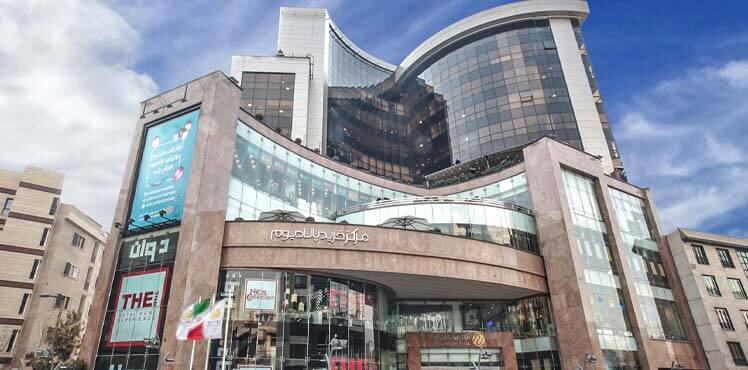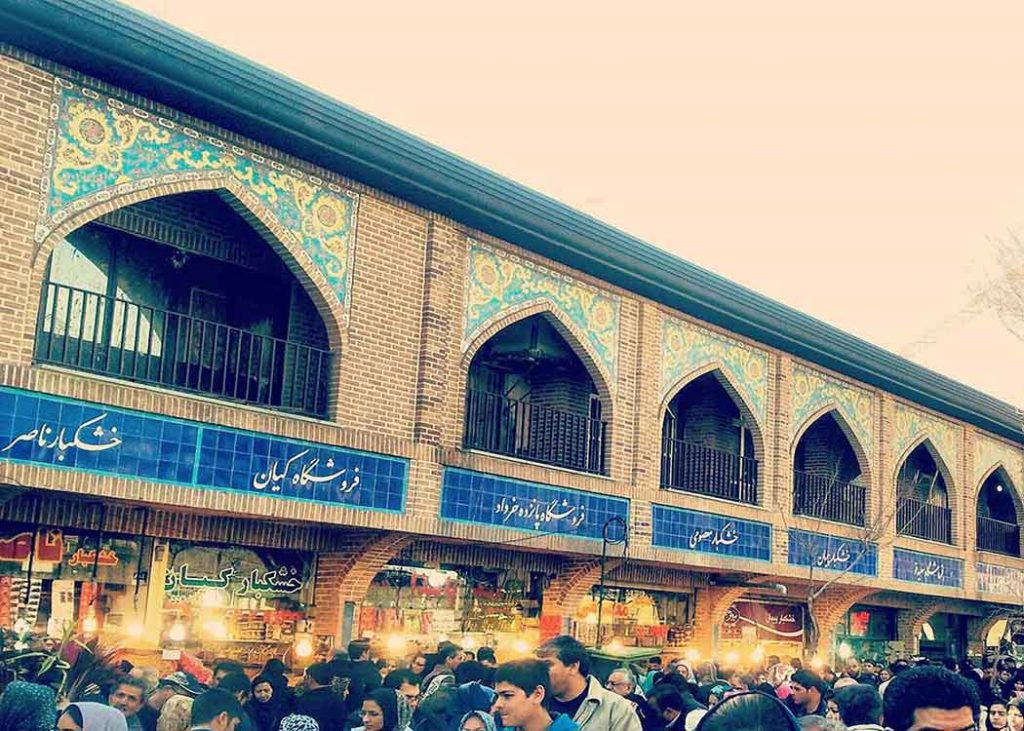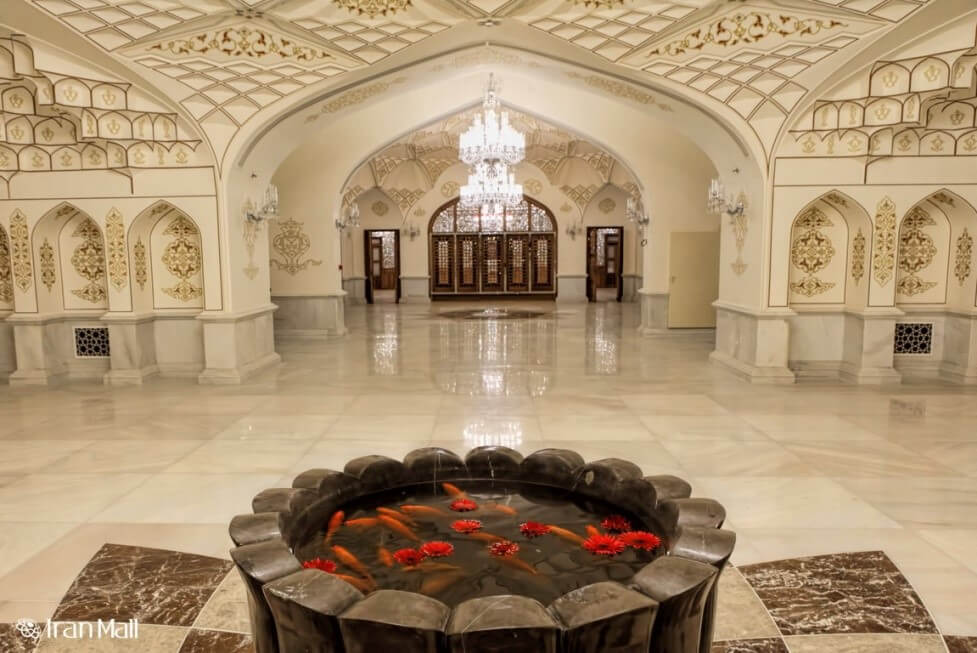
shopping malls of past and present
Bazaars, as the economic centers, have always been an important part of Iran’s society. All the major cities have traces of a traditional bazaar. In some cities, they were preserved, while in others the force of time has destroyed them. The remaining ones, however, are now an important tourist destination as well as a center for shopping. In this post, we will discuss the etymology, different forms, and the architectural features of traditional bazaars. Here we are going to list some the best shopping malls in Tehran for you. Experience the best adventure in Iran with us. To connect with Iran’s vulture and nature you can book Iran desert tour.
Etymology of Bazaar
As a word, the bazaar is the changed form of a middle Persian word waazaar. The word entered the Turkish language, then Italian and then other languages including English. There are different theories regarding the etymology of this word. Here, we will mention the one which more scholars have approved. In this theory, bazaar is the change form of the wahacarana. This word is the combination of two words of Waha meaning price, rate, and trade and Carana meaning the place. Together, they come to mean a place of trade or a place where the money is exchanged.
Different types of Bazaar
In general, from ancient times bazaars were whether periodic lacking any architectural features or permanent pre-constructed with magnificent architecture. As the name signifies, the periodic bazaars happened periodically perhaps weekly, monthly, or yearly. They were usually for trading Livestock and agricultural products. We still have these periodic bazaars that happen once a week and with a variety of products.
Unlike the periodic bazaars, the permanent ones have evolved a lot in history gaining much more than an economical importance. As time passed, other urban elements including school, bathhouse, mosque, and water reservoir became part of the bazaar as well. Nonetheless, bazaars follow a structural plan and have some sections that we will now discuss.
Different sections of Bazaar
The main purpose of a bazaar is naturally trading, however, there needs to be a system of division to help both the merchants and the buyers to find the goods easier. They had to also consider the compatibility or incompatibility of trades. As a result, different sections and divisions came that only grow more detailed with the expansion of the bazaar. Basically, each bazaar includes sections such as Rasteh, Chahar Sooq, Hojreh, Timcheh, and Qeysarieh. Here you can read what each of them means.
Rasteh
The basic element of any bazaar is a Rasteh. They are the passages or paths with shops on both sides. These passages can be primary or subsidiary and can have a vertical or horizontal direction. Naturally, the primary passages are more important and the shops located there are more expensive.
Chahar Sooq
Now that you already know what a Rasteh is you can understand the concept of Chahar Sooq. The vertical and horizontal primary Raste will come to cross each other at some point. The place where these two crosses each other is Chahar Sooq. The word itself means four bazaars referring to the fact that it connects four different passages. Architecturally, Chahar Sooq has a high domed ceiling with lavish architectural ornamentation including stucco work, squinches, and tiling. Chaharsooqs are the place of gathering, discussion, consultation, and the place to share the local news.
Hojreh
These smallest elements of the bazaar are in reality the shops where the goods are traded. Shops were built usually higher than the passage accessed by two or three steps. Then there was a terrace for placing the products and then the door to the shop. Architecturally, the shops are pretty simple. They are 2 to 4 square meters with niches on the walls.
Timcheh
They are roof areas, usually in the form of an octagon in two or three stories with shops all around them. They have architectural details like stucco work, tiling, and a domed ceiling. Usually, the shops of the same trade sell their goods in a Timche.
Qeysarieh
This part of the bazaar which has its own gate and guard is for selling delicate and valuable products such as jewelry and silk. Architecturally, it has a crosslike shape and as mentioned is the only section that has its own gate and guard.
Based on the size of the bazaar, the number of the mentioned sections can increase. The size is also important in the number of schools, mosques, and bathhouses a bazaar has. Although many of the bazaars have changed with the passage of time and have been modernized, they still have elements of the past. In most of Atour city tours, we have bazaar as a destination.
In Tehran we have traditional Bazaars like Tehran Grand Bazaar or Tajrish along side with modern shopping malls that can be at the same level as Dubai`s malls. Tehran is the capital of Iran with so many places to visit, one of which is the shopping malls. Some big and complex shopping centers have gym, restaurant, indoor theme park, food court, cinema, etc to provide comfort and entertainment to the visitors.
Here we are going to list some the best shopping malls in Tehran for you.
Palladium Shopping Center
Palladium is one of the biggest and most modern shopping centers in Iran. It is located in Zaferaniyeh with 200 shops and 24 restaurants. In this place you can find the best of Iranian and other brand`s clothes, jewelry, bags, shoes, toys, books, stationary, etc. furthermore, you can use the gym, playhouse for children, library, etc when visiting this shopping center.

Tehran Grand Bazaar
The traditional Bazaar is one of the attractions for tourists that visit Iran. This enormous Bazaar with millions shops and stores is a great place for buying souvenir that represents Iranian culture. This Bazaar is located near Golestan Palace, which is a must-see too, so you can visit both in one trip. In addition to shopping you can enjoy delicious food at Moslem restaurant or have a cup of tea in Haj Ali Darvish teahouse (which is the smallest teahouse in the world). When visiting Tehran Grand Bazaar also you can visit Jame Mosque, Emam Mosque, Beynolharameyn Bazaar, Seyed Vali Shrine, Seyed Esmaeel Shrine, etc.
Tajrish Bazaar
Tajrish Bazaaris one of the oldest Bazaars in Iran and has become a touristic destination for visitors over the years. In this bazaar you can find any kinds of shops and this place can amaze you with its colorfulness and diversity. Also if you are looking for rare fruits that are not available everywhere, you can find them in Tajrish bazaar at fruit section.
Next to Tajrish bazaar you can visit small malls as Ghaem, Alborz, and Besat malls which are great for make-up, clothes, handbags, shoes, and handicrafts shopping. Don`t forget to check out Saleh Shrine and enjoy its turquoise architecture.

Iran Mall
Iran mall is one of the biggest malls in the Middle East with shops and stores selling home appliances, home decors, leather products, jewelry, make-up and beauty products, clothes and sports equipment. Iran mall complex includes gym, restaurant, café, cinema, playhouse, and hotel.
Iran mall is located at the northwest of Tehran near Chitgar Park. This mall has different parts such as Jame Mosque with breathtaking architecture, Iranian Garden, Didar Garden with a glass bridge on the water, and traditional bazaar. In addition, Mirror Hall, Sharbat Khaneh with amazing architecture, Golden Structure, and Baghe Ketab are recommended to be visited by the tourists. So when you are going to Iran mall, you are not going there for shopping, you will have so much time exploring different parts of the mall. Also be sure to schedule one whole day for Iran mall so that you can visit most parts of it.






